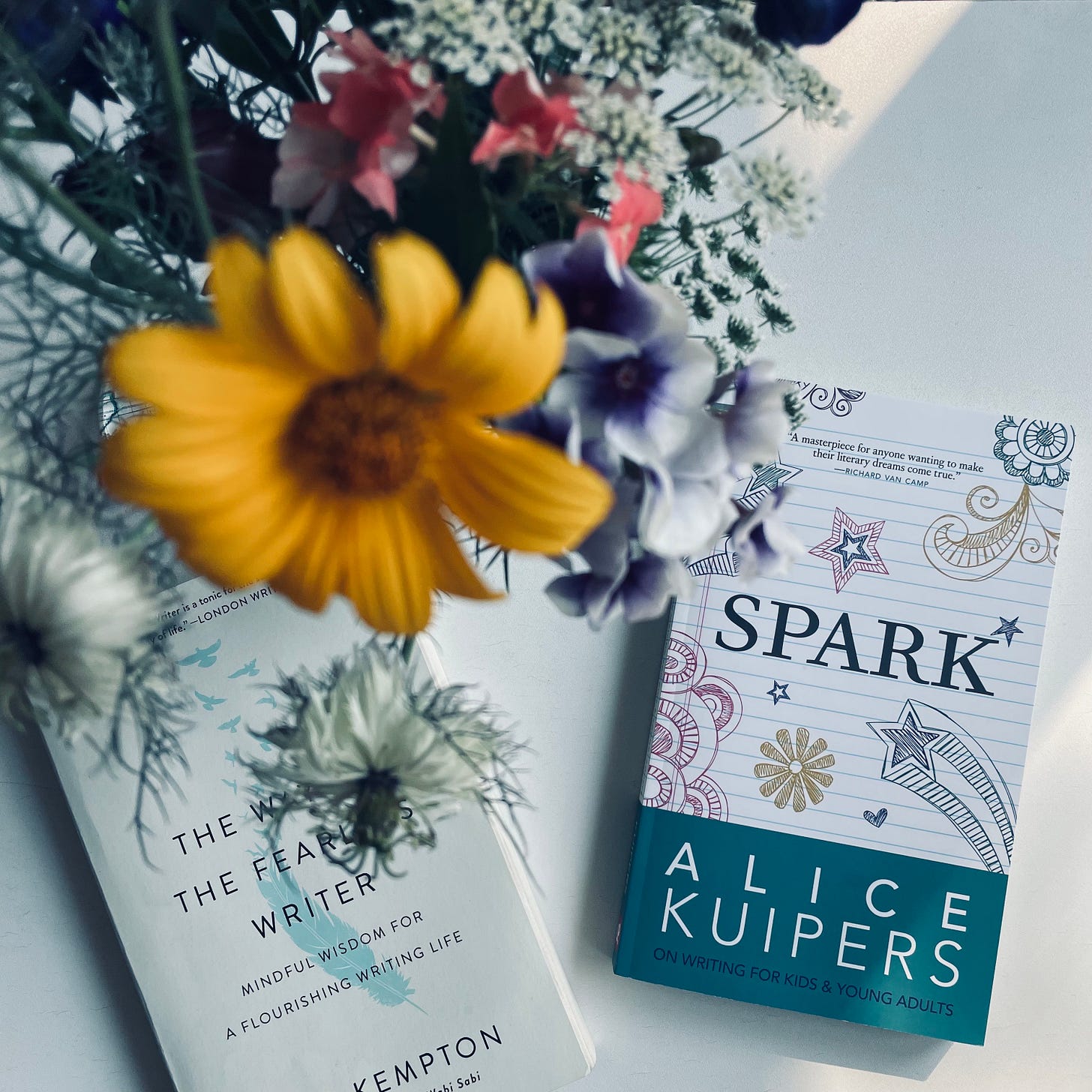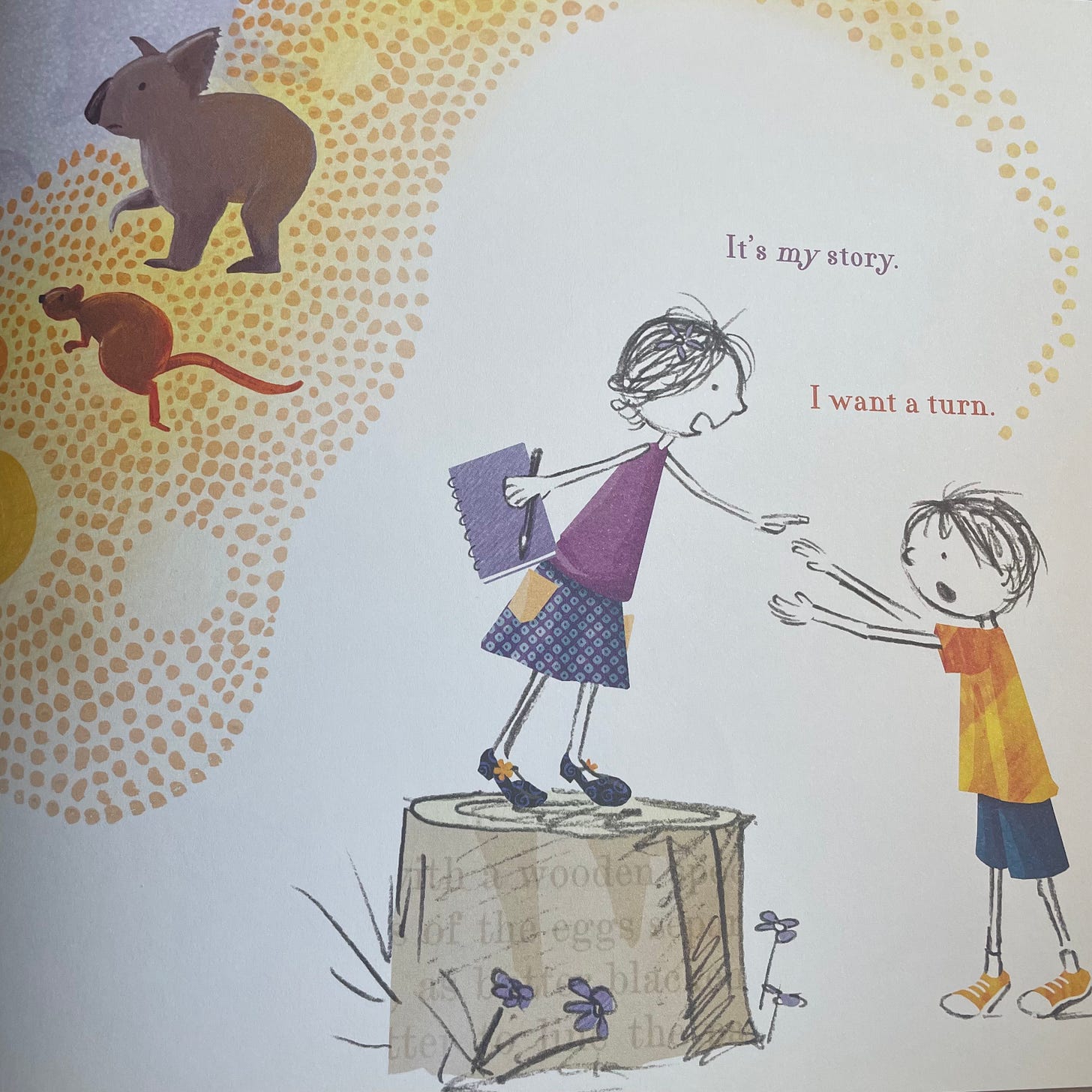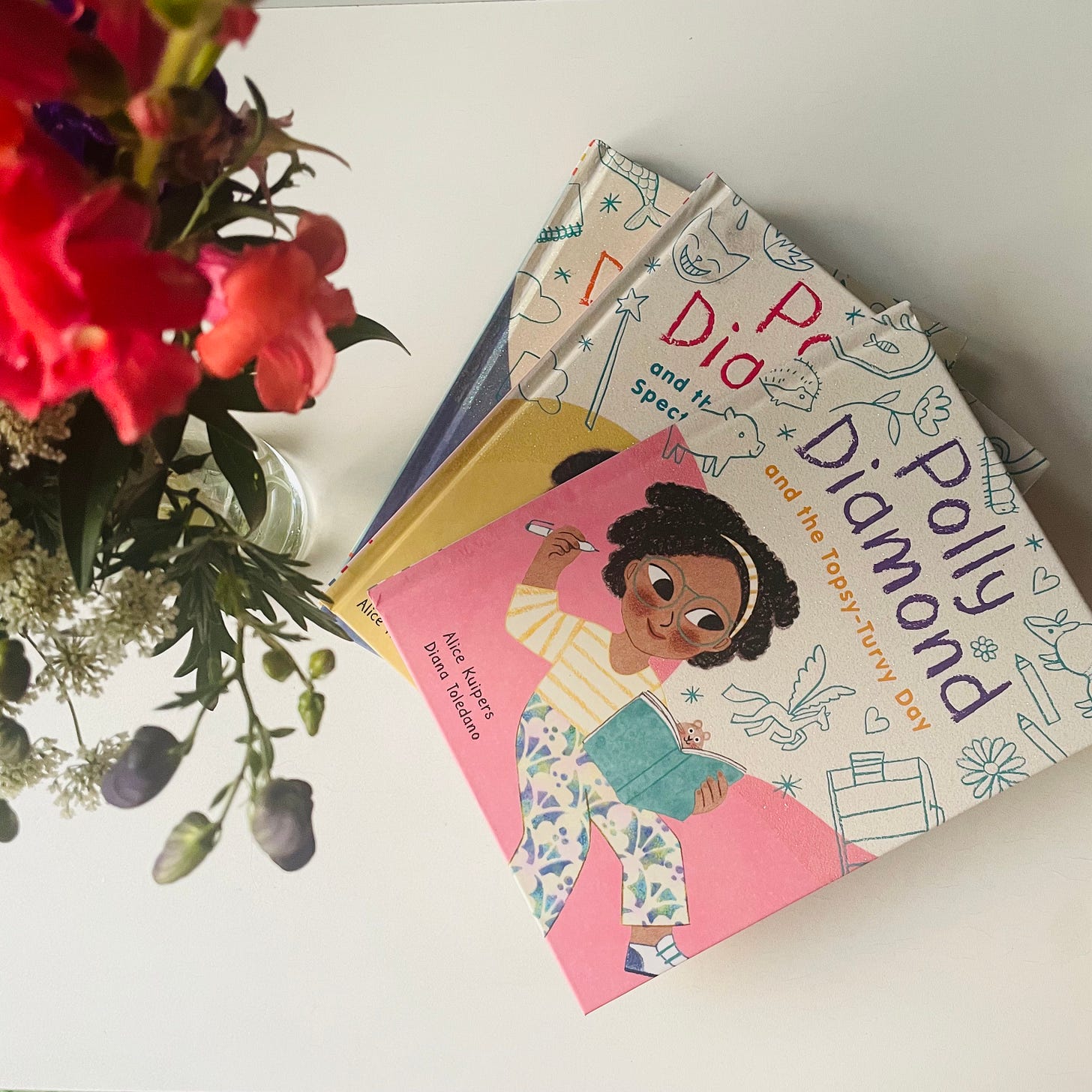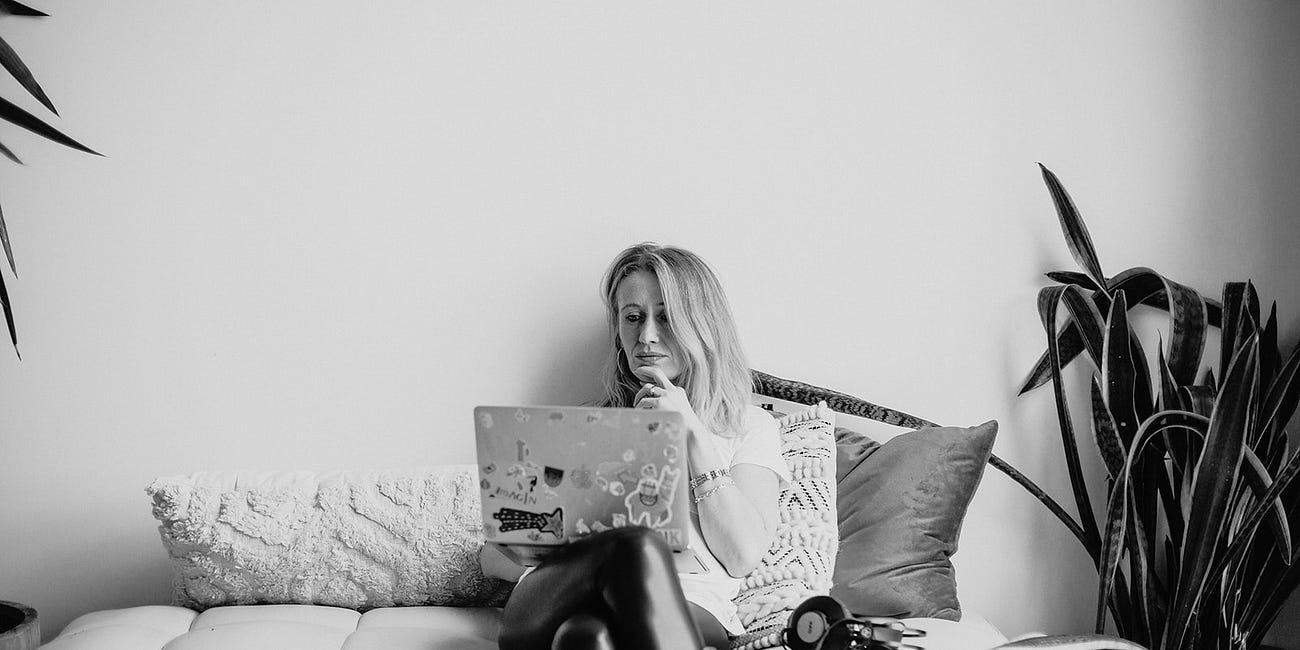10 Simple Things: Takeaways from A Writing Life
What I Learned (so far) from Writing 14 Books for Kids and Young Adults
Simple Things are short lists to share with you the things living a writing life has taught me.
xoxo
Writing for young readers has taught me about storytelling, character development, and staying connected to readers. Over many years and books, these are the most important takeaways I’ll carry forward into future projects. The first one seems backward, but this is really a piece about what publishing has taught me, not just what writing has taught me: for every published book there are reams of words that I haven’t sent out or shared…
I hope this gets you reflecting on your own creative journeys.
Can you share with me the most important lessons you’ve learned in your creative work or pleasures?
How have your past projects shaped who you are today?
One: Sharing work with the world is hard
Life on the Refrigerator Door was my first published book.
It was the seventh one I wrote. I sent out all the other books but they all got rejected. I’d had so many rejections, I could probably paper a wall with them if I kept them. (I don’t!)
What I learned?
I could deal with rejection. It made me feel awful, but writing always made me feel better.
Writing was the solution!
Then the strangest thing happened. When this book of mine got replies and responses and excitement from the industry, a quiet terror started in my spine. Like ice.
When the book went to auction, I vomited. All those years of rejection had taught me how to handle rejection.
Suddenly there I was, head over the toilet, because the idea of having actual readers terrified me.
Rejection is hard, but so is sharing work with the world.
My inner terror continued. I had reviews, some gorgeous.
Yet.
It was the readers who hated my writing who stuck in my head like angry monsters. It took years, and a lot of other books, to learn the navigate between those quiet writing hours alone and braving words in the world.
(See Eight, below!)
Two: Discovering your story is vital
My second book was under contract, but the more I wrote, the more I lost myself (note the title in the US…)
I was trying to please other people before figuring out what the book needed to be. My whole writing life became what will other people think?
Only 3000 words of the original draft now exist in the novel: The Worst Thing She Ever Did (Lost for Words in the US).
When I pick up that book, I get hot remembering my lost writing self. Lost For Words was written from a place of fear, appropriate for the topic, but not good for my writing self.
Three: Get expansive and creative, dig deep, do it over and over.
My third novel is about an online teenage advice columnist, who is unable to follow her own good advice.
I loved finding tips by thinking about what people had taught me, each tip opened up new storytelling possibilities. I used tips from my family and friends all the way through. It made the book more joyful for me—I inhabited those pages.
Four: Lean into the chaos
In 2014, I published three books while racing after a one-year-old. Then getting pregnant with my fourth baby.
I don’t remember a damn thing.
But, oh, those sparks of creative joy in all the wilds of having small children fuelled me intensely. Bethanie Murguia created gorgeous illustrations for my picture book that year, and still now, those images thrill me.
Five: Ideas are everywhere
Walking along the quiet library shelves, I heard a whisper of ‘what if?’ What if a book could write back to you? (Now, in a Chat GPT era, this sounds less alluring, perhaps?) At the time, this led me on the adventure that became the first of my Polly Diamond books.
Pay attention. Your next idea could be glimmering like gold.
Six: Give your ideas time
From that first idea to the finished book, seven years passed. I wrote draft after draft. I read thousands of chapter books. I gave birth to my daughter who eventually picked up the Advanced Reader Copy of Polly Diamond and read it.
The first-ever book she read to herself.
The journey of the book and the time it took made sense.
Seven: Listen
The opportunity to write Always Smile frightened me. Writing about a young woman whose life was tragically cut short seemed impossible.
Until I listened.
Quietly, inside, I heard an inner voice saying: “Be open to this.” I listened. I listened to Carley’s family. Her loved ones. Her story. The book, I hope, is a testament to the brave life she lived.
Eight: Every book is a conversation and a connection
Every day someone reaches out and tells me how something I’ve written has connected with them. We have conversations and I think more about creative landscapes because of readers.
Because of you.
Last week, a reader here, Carolyn Wilker, took time to write this to me: Yes, I know what she's talking about. Her life is real and full, and she's writing about it so I can feel included.
That connection and response was—is—vital.
Yes, sharing work with the world is hard, as I told you at the beginning of this. But when your writing becomes a way to unlock conversations and connections, fear falls by the wayside. Mostly…
Nine: Keep showing up
Some days, writing is joyful. Smiles all round.
Others? It’s a grind. Showing up each day means I’ve written fourteen published books, several secret books that I’ve ghosted for others, three or four online books for kids to pick what happens next, and at least fifty books that lie in a ‘not for the world right now’ file…. rejected books and stories. Or those that I wrote just for me.
Writing makes me better at being me, it helps me understand the world, it’s my way of getting into Flow. It all happens when I open a blank page.
Showing up is the biggest takeaway I’ve learned.
Ten: Pivot to get a new view
My fourteenth book is all about how to write for young readers: Spark.
In it, I share everything I can to writers draft, finish and edit their own books for kids or young adults, reflecting on what I’ve learned. I love sharing ideas and advice for anyone who wants to write, too: building a writing life is so vital for me and I want to share what I know.
At the same time, I’ve pivoted to writing a crime novel for adults, while writing weekly Substack pieces for you. When people ask me what they could read of mine (which is a gorgeous question, thank you) I direct them here, to this space.
I hope you enjoy reading these as much as I enjoy writing them for you. I’ll finish with this:
“I could spend my whole life exploring the world and never come close to seeing everything there is to see... I learned not to worry too much if I took a wrong step. Something would come of whichever route I chose.”
I hope this gets you reflecting on your own creative journeys, as I asked at the start.
Can you share with me the most important lessons you’ve learned in your creative work or pleasures?
How have your past projects shaped who you are today?
xoxoxo
Alice
Read: I love
’s work, and her piece reflecting on pauses, summer, creative fires, is here.Editor and writer
has a fun quiz for you.As Spark makes its way in the world, I looked back at some of the writing advice I’ve shared for you and thought you might like this:
What to do when it's soooo hard to get to the page.
I’ve turned many elements of my life that I love into work. The most profound happened many years ago when I was just tipping from teenager to adult, figuring out the ways of the working world. I decided I wanted to be a writer. That secret thing that I most loved was what I wanted to make










Beautiful reflections / advice Alice. I love reading you. I admire you for your ability to write books AND raise four children!! Inconceivable to me… :)
Love. Thank you! I began writing about five years ago, and I find that #9 has been the most challenging at a time when family life can feel all-consuming. Still, the more I show up, the easier it becomes. It's funny, because even on those days drenched in self-doubt, the one thing I know in my gut is that I will keep writing.